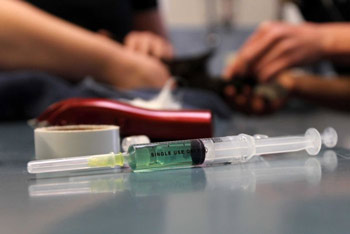Research has shown veterinarians have a suicide rate four times that of the general population.
“Members of healthcare professions like veterinary have to cope with working in professions that have a reputation for a high level of psychological distress and risk of suicide; above that of other professions and the general population,” said Connell, who is a provisional psychologist and PhD candidate at Murdoch.
“They are working daily in often stressful environments trying to juggle treating the animal while talking with the owner and their colleagues. Our study will help us to understand what role this plays in their mental health.
“We encourage all vets, including those who feel they are coping well, to participate, as this will provide valuable information about what contributes to resilience for vets.”
Connell said it was critical to conduct research into the underlying causes of mental health issues in the profession and she said her study would provide vital information on the workplace factors affecting vets.
The findings could have wider applications to other caring professions, like doctors, dentists, nurses and veterinary nurses.
You can read more about the topic of mental health among vets in No Way Out and Compassion Fatigue, both published in Vet Practice magazine.
Demands on vets take a toll
Vets often top the list of most respected professions, but many people are often surprised by the fact that the person who cares for their animal's medical needs commonly heads another list — a profession at greater risk of suicide.
Studies have shown the profession has a rate of suicide four times the national rate in Australia, with long hours, high stress, emotional situations, access to lethal drugs and regularly dealing with death all factors cited.
Ms Skirving, who is president of South Australian Rural Vets, said the upside to those alarming statistics was that the veterinary industry was tackling the matter head-on, encouraging proactive education and support strategies.
The Australian Veterinary Association (AVA) has introduced a mentoring scheme to buddy up new graduates with older and more experienced vets, to discuss and "download" their experiences in their first few years in the vet world.
Along with a 24-hour telephone counselling service, the AVA also runs special mental health first-aid workshops for practices, helping colleagues identify the risk factors and giving them clear advice on what action to take.
Vets have dual role
The relationship between suicide risk and profession is a complex one, and an innovative study underway at Western Australia's Murdoch University not only aims to get a clearer picture of the current mental health status of Australia's vets, but also delve into the industry's human dynamic.

Debate surrounds lethal drug
Death is a basic fact of life in the vet world, and vets in busy clinics may perform multiple euthanasia procedures on any number of animals each week.But the drug vets use to euthanase animals is the current subject of heavy debate within the Australian veterinary industry.The prevalence of human misuse of the drug came to the fore after the publication this year of a coroner's findings into the suicide of a Queensland dog groomer in 2013.
Citing information from a 2016 Australian National Coronial Information System report, coroner John Hutton identified at least 33 suicides Australia-wide from 2000-2016 where the source of the drug had potentially come from veterinary clinics.
Of the number of deaths, Mr Hutton noted many were veterinarians or vet nurses. In his recommendations, Mr Hutton said the version of the drug used for animal euthanasia should be rescheduled from Schedule 4 (S4), to Schedule 8 (S8), to ensure tighter controls around storage, recording and reporting.
The drug's manufacturer and the AVA did not support the move. Recently, the AVA asked more than 2,000 members whether they would support rescheduling to S8, but 62 per cent of respondents did not agree.Much of the reasoning centred around animal welfare and the need for vets to be able to access the drug quickly in emergency situations, and stricter recording measures added extra workload. AVA policy manager Debbie Neutze said the association and its members supported that the drug be locked away, but still under its current classification of S4.Until state laws catch up, many vet practices around Australia are enacting their own safety measures.
Being proactive about mental health
At the Mount Gambier clinic, the drug is kept locked away in a safe, along with their S8 drugs. We are not legally required to keep it under lock and key but we do. The potential for the drug to be abused and misused is real," Ms Skirving said." We believe it is best practice to keep drugs like that out of circulation."
As a vet and an employer of vets, Ms Skirving said looking out for the health and wellbeing of her large team of staff was a matter she took extremely seriously. Every day is different. There is always a challenge," she said. "It's about trying to minimise the stresses that are involved with an innately stressful profession, and sometimes that is hard to achieve in our industry. Just this year, we've changed our vet roster so that vets have more time off so they can have more work/life balance. Staff struggling to deal with traumatic or concerning incidents were given time to debrief and discuss their concerns within the workplace and through external services.
"It is proactive and ongoing. I think if you sit back and wait for mental health issues to arise, then you are too late," Ms Skirving said.
If you or anyone you know needs help: